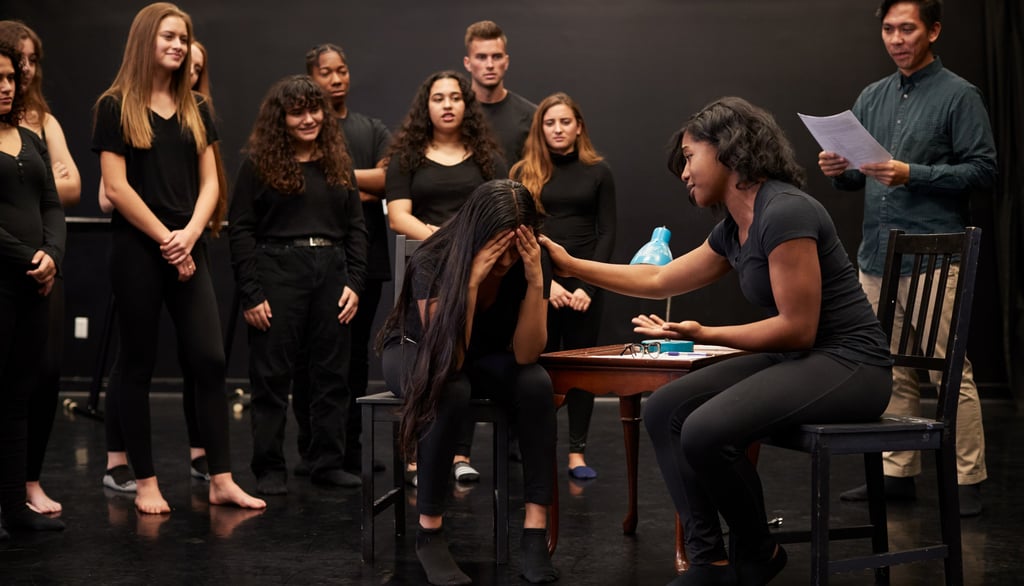The Drama Director’s Guide to Running Efficient (and Human!) Rehearsals
Streamline your rehearsal process with proven strategies for drama teachers. Learn how to build ensemble, set effective routines, and empower student stage managers—plus grab free resources and editable templates.
Katie Zakkak
7/1/20252 min read



As any drama teacher knows, the rehearsal process is a race against time. You're not running a professional company; you’re guiding busy students, managing constant schedule conflicts, and trying to pull off something beautiful with limited hours.
Still, you want rehearsals to feel purposeful, efficient, and meaningful.
Over the years, I’ve developed some core strategies that help me maximize our time without sacrificing creativity or connection. These tips are built into my Rehearsal Resources Bundle on TPT, and if you want to keep getting practical advice, get my free Drama Teacher Toolkit and sign up for the newsletter—packed with tips, tools, and freebies to support your season.
1. Don’t Skip the Foundation
It can be tempting to dive straight into blocking or scenes when time is tight—but resist that urge.
Take the time at the start of your rehearsal process to:
Set clear expectations
Build ensemble through icebreakers and trust-building
Do a full table read
Assign character reflection work (yes, even as homework!)
I’ve learned this the hard way: when students don’t connect with their characters early, it shows later—often during tech week when it’s way harder to fix. So now, I bake that character development into the beginning of the schedule on purpose.
✨ My Rehearsal Handbook (part of the bundle) includes reflection prompts, character analysis pages, and assignments to keep students engaged and invested from the start.
2. Establish a Rehearsal Routine
Every rehearsal, no matter how short, follows the same rhythm:
⭐ Warm-Up
Helps students shift into performance mode and connect with each other.
🎁 Use the free Warm-up Game Generator for some quick go-to ideas!
⭐ Mini Cast Meeting
A quick group check-in to set goals for the day:
“Today we’re finishing blocking for Scene 3 and running Act I transitions.”
⭐ Focused Work Time
Whether we’re doing blocking, scene work, or choreography, everyone knows what they’re working toward.
⭐ Reflection or Wrap-Up
Just a few minutes to name what we did, what worked, and what needs more attention next time. This is also a good time for announcements.
This routine creates consistency and helps students take ownership of the process.
3. Use Student Stage Management to Track Progress
I train my student stage managers to fill out a daily rehearsal report using a simple template. It includes:
What we worked on
Who was present
Any major notes or reminders
What still needs to be done
The report gets shared with the directing, design, and tech teams so we’re all aligned. It becomes a log of progress, decisions, and next steps.
🎭 The Rehearsal Resources Bundle includes editable templates for these reports, along with schedules and calendars to keep everything organized.
Final Thoughts
Yes, rehearsal time is limited. But with thoughtful structure and a strong start, you can make every moment count. Take the time to:
Build ensemble
Prioritize character connection
Set rehearsal routines
Track and share progress
It’s an investment that pays off big time when tech week hits and your students are confident, collaborative, and truly prepared.
If you’re looking for tools to streamline this part of the process, check out my Rehearsal Resource Bundle on TPT, and don’t forget to sign up for the Drama Teacher Toolkit for your free resources and ongoing tips!
Happy teaching, and break a leg!
